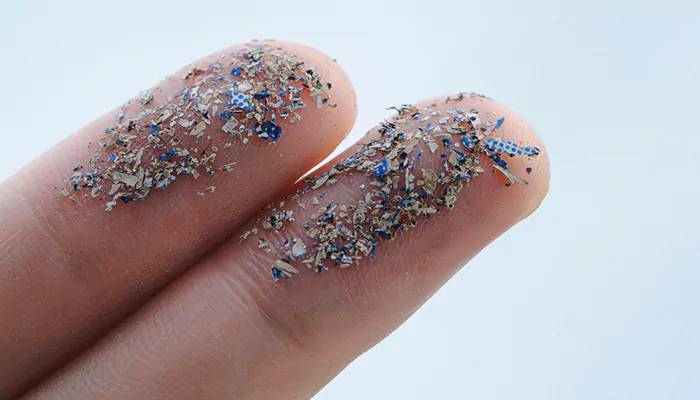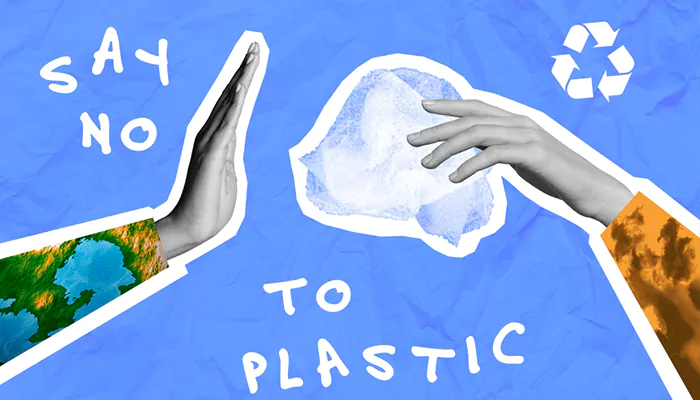World Earth Day: The Invisible Threat – Microplastics and Their Impact on Our Planet
- Devyani
- 7 months ago
- 4 minutes read

They’re tiny, they’re everywhere, and they’re causing big problems. Let’s talk about microplastics—the hidden invaders harming our planet.
Picture this: You take a sip of water, bite into your favorite seafood, or even breathe in the air around you. What if I told you that with each of these actions, you might be ingesting tiny plastic particles? Yep, that’s the unsettling reality of microplastics.
So, what exactly are they? Microplastics are plastic fragments smaller than 5mm—about the size of a sesame seed or even smaller. Some are microbeads from cosmetics, others come from broken-down plastic waste, and some are fibers from synthetic clothes. They’re so small that they slip through filters, float in water, and even travel through the air.
And here’s the kicker—they’re everywhere. From the deepest ocean trenches to the peaks of Mount Everest, microplastics have invaded every corner of our planet.
How Do Microplastics End Up Everywhere?

You might wonder, "How did things get this bad?" Well, let’s break it down:
The Breakdown of Big Plastics
That plastic bottle you tossed years ago? It doesn’t just disappear. Sunlight, wind, and waves break it into smaller and smaller pieces, turning it into microplastics over time.
Microbeads in Personal Care Products
Remember those exfoliating face scrubs with tiny beads? Many contained microplastics that washed straight down the drain, slipping past water treatment plants into rivers and oceans. (Thankfully, many countries have banned them, but older products still linger.)
Synthetic Clothing Sheds Fibers
Every time you wash polyester or nylon clothes, thousands of microfibers detach and enter wastewater. These fibers are a major source of microplastic pollution.
Car Tires and Paint
Yep, even driving contributes! Tire wear releases microplastics, and paint from roads and ships chips off, adding to the problem.
The Not-So-Invisible Impact on Nature
Okay, so microplastics are everywhere—but why should we care? Because they’re messing with ecosystems in ways we’re only beginning to understand.
Marine Life is Suffering
Fish, turtles, and even plankton mistake microplastics for food. Once ingested, these particles can block digestive systems, leach harmful chemicals, and even work their way up the food chain—straight to our plates.
Soil and Freshwater Aren’t Safe Either
Microplastics aren’t just an ocean problem. They’re in farmland (thanks to sewage sludge used as fertilizer) and freshwater sources, affecting plants, insects, and animals.
They’re in Our Bodies Too
Studies have found microplastics in human lungs, blood, and even placentas. The long-term health effects? Still unclear, but it’s definitely not something we want inside us.
What Can We Do? Small Steps, Big Difference
Feeling overwhelmed? Don’t worry—there’s plenty we can do to fight back.
Cut Down on Single-Use Plastics

Less plastic waste = fewer microplastics. Swap plastic bottles for reusable ones, avoid plastic straws, and bring your own shopping bags.
Wash Clothes Wisely
Synthetic fabrics shed fibers, but you can reduce it by:
- Washing clothes less often
- Using a microfiber-catching laundry bag
- Choosing natural fabrics like cotton or linen
Support Bans and Better Policies
Many countries have banned microbeads, but stronger regulations on plastic production and waste management are needed. Support policies that push for change!
Spread the Word
Awareness is power. Talk to friends, share info on social media, and encourage others to rethink their plastic use.
Microplastics might be invisible to the naked eye, but their impact is huge. This Earth Day, let’s take a moment to recognize this hidden threat—and do our part to tackle it.
Small actions add up. If we all make a few changes, we can help keep our planet cleaner, healthier, and safer for future generations. After all, Earth is the only home we’ve got—let’s treat it that way.













